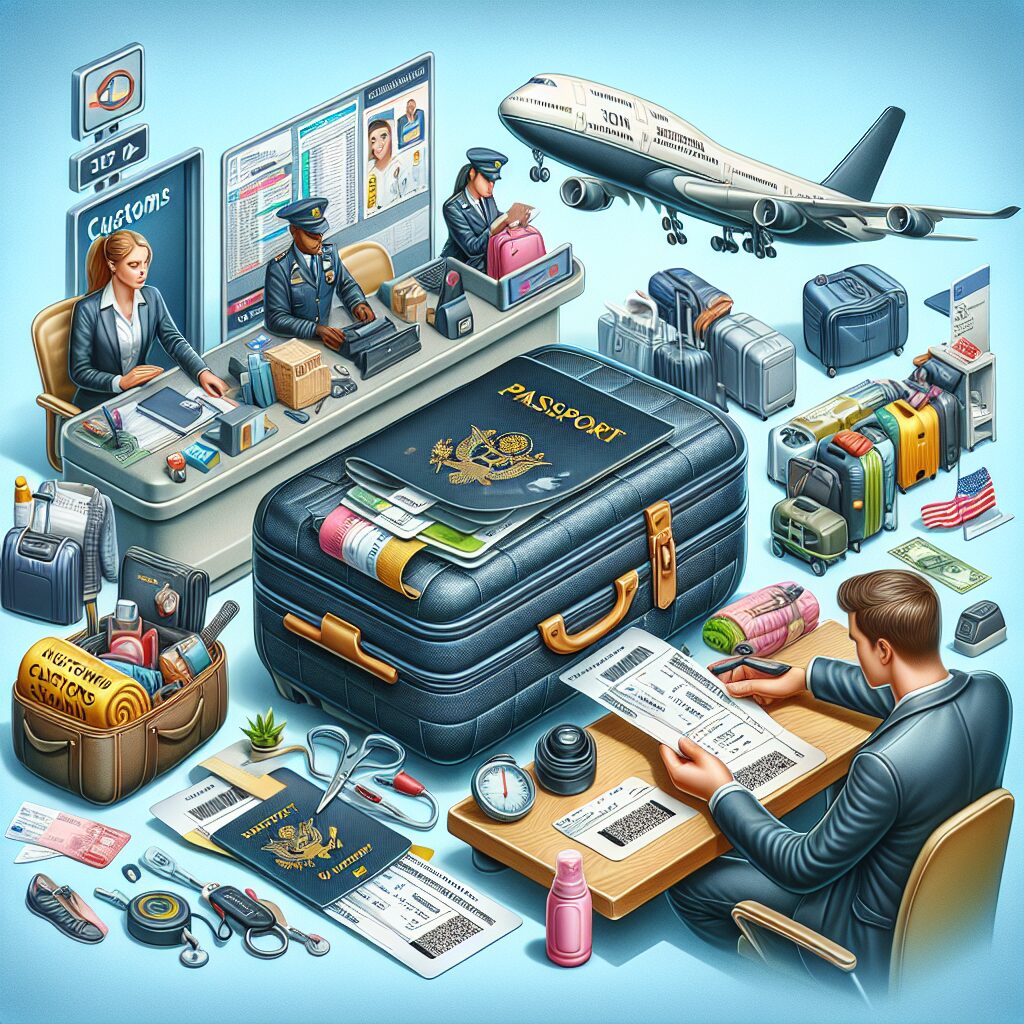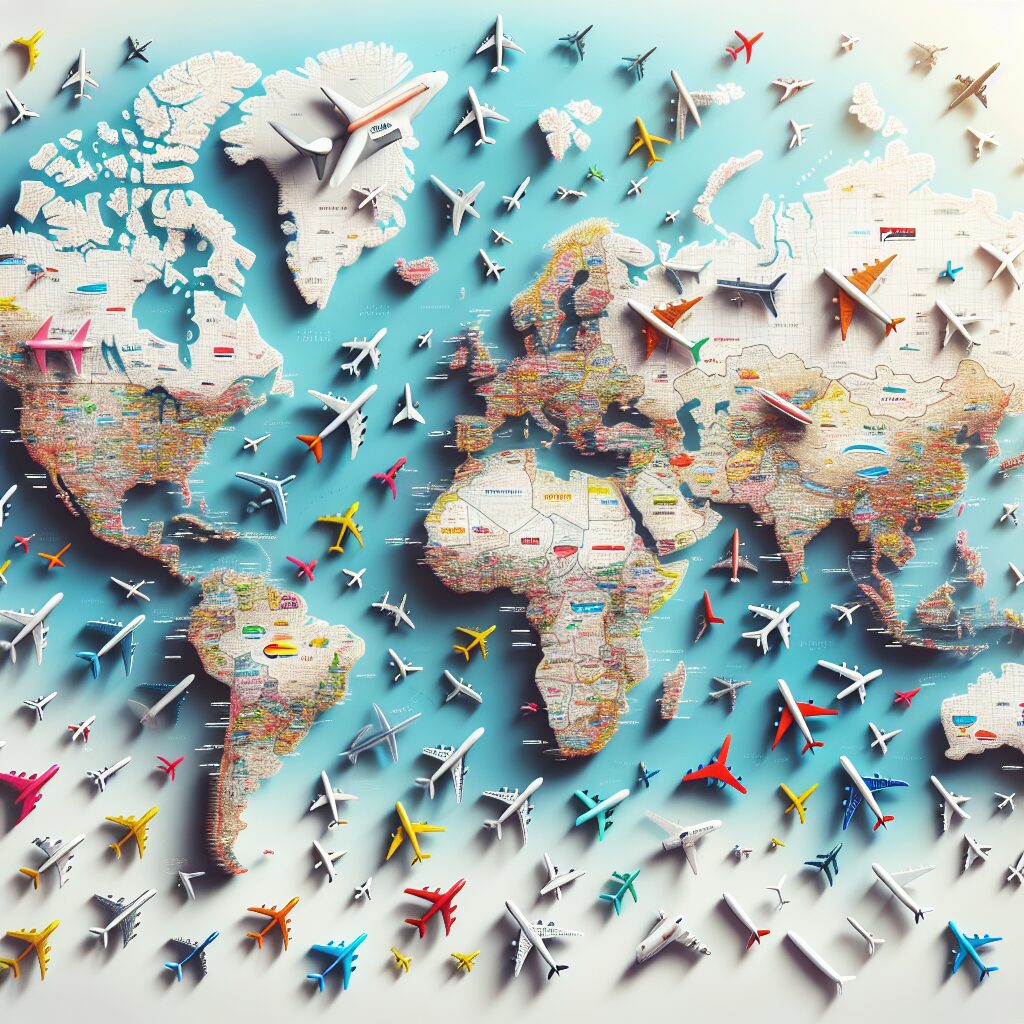Traveling internationally can be an exhilarating experience, filled with new sights, sounds, and cultures. However, it can also be quite overwhelming, especially if you are not well-prepared. That’s where these international flight tips come in handy. Whether you are a seasoned traveler or embarking on your first international journey, these tips will ensure a smooth and hassle-free travel experience. From packing efficiently to navigating airport security, we will cover all the essential aspects of international travel.
One of the unique features of international travel is the need to comply with various customs and immigration regulations. It is essential to familiarize yourself with the visa requirements and entry restrictions of your destination country before your trip. Additionally, understanding the cultural sensitivities and local customs of the place you are visiting can go a long way in making your journey enjoyable and respectful. International flights often involve long hours in the air, so it is crucial to plan ahead and make your journey as comfortable as possible.
Now that we have explored the importance of international flight tips, let’s delve into the key takeaways that will make your travel experience smoother. Firstly, we will discuss the art of packing efficiently, ensuring that you have all the necessary essentials without overloading your luggage. Next, we will provide insights into navigating airport security seamlessly, highlighting the items to be aware of and the procedures to follow. Stay tuned as we unveil practical tips for handling jet lag, making the most of in-flight entertainment, and even managing your travel documents effectively. These valuable tips will help you confidently embark on your next international adventure, armed with the knowledge to ensure a hassle-free journey.
Key Takeaways
1. Plan ahead and prepare all necessary documents and essentials for international travel, including a valid passport, necessary visas, and travel insurance. Research the local customs and regulations of your destination country to avoid any unexpected issues.
2. Pack efficiently and prioritize comfort by choosing appropriate clothing for the flight and considering the weather at your destination. Don’t forget to bring essential items such as a travel pillow, noise-canceling headphones, and entertainment options to make the journey more enjoyable.
3. Be mindful of airport procedures and arrive early to allow ample time for security checks and any necessary paperwork. Take advantage of online check-in and consider joining a trusted traveler program to expedite the process when flying frequently.
4. Stay healthy during your flight by staying hydrated, avoiding excessive alcohol consumption, and moving around the cabin regularly to prevent deep vein thrombosis (DVT). Bring your own refillable water bottle and snacks to curb hunger and save money.
5. Stay connected by researching and ensuring you have the necessary adapters for your destination’s power outlets. Familiarize yourself with available Wi-Fi options and consider purchasing an international SIM card or data plan to avoid high roaming charges.
What are the Best International Flight Tips for Smooth Travel?
Booking and Planning
When it comes to international travel, proper booking and planning are crucial for a smooth experience. Here are some tips to consider:
- Research and compare flight options: Take the time to compare prices, layovers, and airlines to find the best possible deal for your trip.
- Book in advance: Booking your flights well in advance often provides better prices and ensures your preferred dates and times are available.
- Choose convenient airports: Consider airports that are closer to your destination, as this can save you time and money on transportation.
- Check passport and visa requirements: Make sure your passport is valid for at least six months beyond your intended travel dates, and check if you need a visa for your destination.
Packing and Luggage
Proper packing and handling of luggage can significantly enhance your international travel experience:
- Create a checklist: Make a list of essential items you need to pack, including travel documents, clothing, accessories, and electronic devices.
- Check airline’s baggage policy: Each airline has different baggage allowances and restrictions, so ensure your luggage complies with their guidelines to avoid extra fees or issues at the airport.
- Consider carry-on essentials: Pack essential items, such as medication, a change of clothes, toiletries, and chargers, in your carry-on in case your checked baggage gets delayed or lost.
- Secure your belongings: Investing in sturdy luggage, locks, and luggage trackers can provide peace of mind and protect your belongings during the journey.
Airport Experience
Navigating airports efficiently and managing your time effectively can make international travel smoother:
- Arrive early: It’s recommended to arrive at the airport at least three hours before your international flight to allow sufficient time for check-in, security screening, and potential unexpected delays.
- Check-in online: Take advantage of online check-in options to save time and avoid long queues at the airport.
- Pack essential documents: Ensure you have all necessary travel documents, including your passport, boarding pass, and any required visas with you.
- Familiarize yourself with airport layout: Review the airport layout before your departure to locate terminals, gates, immigration, and baggage claim areas to avoid confusion and stress.
During the Flight
Making the most of your time during the flight can contribute to a pleasant international travel experience:
- Dress comfortably: Wear loose-fitting, breathable clothing and pack a lightweight sweater or scarf for varying temperatures on the plane.
- Stay hydrated: Drink plenty of water during the flight to avoid dehydration.
- Move and stretch: Take short walks, stretch your legs, and do in-seat exercises to prevent stiffness and improve circulation during long flights.
- Entertainment and comfort: Bring your own entertainment, such as books, devices, or headphones, to keep yourself occupied, and use travel pillows and blankets for added comfort.
Arrival and Customs
Smoothly navigating through arrival procedures and customs is essential for a hassle-free international travel experience:
- Follow signs and instructions: Pay attention to airport signs, instructions, and announcements to know where to go for customs, baggage claim, and transportation options.
- Prepare customs documents: Fill out any required customs forms accurately and have them ready along with your passport and other travel documents.
- Declare any restricted items: Be aware of the customs regulations of your destination country and declare any restricted or prohibited items to avoid penalties.
- Arrange transportation beforehand: Plan your transportation from the airport in advance, whether it’s a pre-booked taxi, airport shuttle, or public transportation.
Final Tips for International Travel
- Always carry a photocopy of your passport and other important documents in case of loss or theft.
- Research local customs and etiquette to respect the culture of your destination.
- Make sure you have appropriate travel insurance that covers medical emergencies, trip cancellations, and lost or stolen belongings.
- Notify your bank and credit card companies about your travel plans to avoid any issues with your cards during your trip.
- Stay informed about any travel advisories, safety precautions, or health requirements for your destination.
Frequently Asked Questions
1. Can I use my mobile phone during an international flight?
Yes, you can use your mobile phone during an international flight, but only when the pilot allows it. Make sure to set your phone in airplane mode and follow the instructions provided by the airline staff.
2. Are there any restrictions on the liquids I can carry in my hand luggage?
Yes, there are restrictions on the liquids you can carry in your hand luggage. Generally, you are allowed to bring small containers of liquids, gels, and aerosols (such as toiletries) that are each 3.4 ounces (100 milliliters) or less. All the containers must fit in a clear, quart-sized plastic bag.
3. How early should I arrive at the airport for an international flight?
It is recommended to arrive at the airport at least three hours before the scheduled departure time for an international flight. This will allow you enough time for check-in, security procedures, and immigration formalities.
4. Can I bring my own food on an international flight?
Yes, you can bring your own food on an international flight. However, it is advisable to check with the airline beforehand for any specific regulations or restrictions regarding bringing outside food. Keep in mind that some countries have restrictions on certain food items, so it’s important to be aware of those as well.
5. Can I bring my prescription medication on an international flight?
Yes, you can bring your prescription medication on an international flight. It is recommended to keep them in their original packaging and carry a copy of the prescription with you. Inform the security officers about the medication during the screening process to avoid any issues.
6. Is travel insurance necessary for international flights?
While travel insurance is not mandatory, it is highly recommended for international flights. Travel insurance can provide coverage for medical emergencies, trip cancellation or interruption, lost or delayed baggage, and other unforeseen circumstances that may occur during your trip.
7. Can I bring my pet on an international flight?
Yes, you can bring your pet on an international flight, but specific regulations and requirements vary depending on the airline and the destination country. It is crucial to contact the airline well in advance to understand their pet travel policies and make necessary arrangements.
8. What should I do if my international flight is delayed or canceled?
If your international flight is delayed or canceled, the first step is to stay calm and contact the airline immediately. They will provide you with information on rebooking options, compensation if applicable, and assistance for accommodation or meals depending on the circumstances. It is also advisable to have the airline’s customer service number handy in case of emergencies.
9. Do I need a visa for every international destination?
The need for a visa depends on the destination country and your nationality. It is essential to check the visa requirements well in advance and apply accordingly. Some countries offer visa-on-arrival or visa-free entry, while others require prior visa approval.
10. Should I exchange currency before my international flight?
It is recommended to exchange a small amount of currency before your international flight to cover immediate expenses upon arrival. However, it is often more convenient and cost-effective to exchange currency at your destination airport or withdraw cash from ATMs.
Final Thoughts
International travel can be an exciting experience, but it requires careful planning and preparation to ensure a smooth journey. By following these international flight tips, you can ease any concerns and make the most of your travel adventure. Remember to check for updated travel information and guidelines from official sources, pack wisely, and stay informed about the specific requirements of your destination. Bon voyage!
Additionally, always keep a positive mindset and be adaptable to unforeseen situations. Traveling internationally allows you to explore new cultures, broaden your horizons, and create lifelong memories. Embrace the diversity and enjoy the journey, keeping in mind that the overall experience is what matters the most. Safe travels and happy adventures!



